Effects of Reversed Shock Waves on Operation Mode in H2/O2 Rotating Detonation Chambers
Abstract
:1. Introduction
2. Methodology
3. Results and Discussion
3.1. Formation and Stability of Reversed Shock Waves
3.2. SDT after Passing through Isolated Fresh Gas Region
3.3. Effects of Reversed Shock Waves in RDC
3.3.1. Self-Organization after Ignition
3.3.2. Contra-Rotating Waves Mode
3.3.3. Mode Switching
3.3.4. Influence on Detonation Wave Number
4. Conclusions
Author Contributions
Funding
Institutional Review Board Statement
Informed Consent Statement
Data Availability Statement
Conflicts of Interest
References
- Voitsekhovskii, B.V. Stationary detonation. Dokl. Akad. Nauk. Nauk. SSSR 1959, 129, 1254–1256. [Google Scholar]
- Bykovskii, F.A.; Vedernikov, E.F. Continuous detonation combustion of an annular gas-mixture layer. Combust. Explos. Shock. Waves 1996, 32, 489–491. [Google Scholar] [CrossRef]
- Bennewitz, J.W.; Bigler, B.R.; Ross, M.C.; Danczyk, S.A.; Hargus, W.A.; Smith, R.D. Performance of a Rotating Detonation Rocket Engine with Various Convergent Nozzles; Chamber Lengths. Energies 2021, 14, 2037. [Google Scholar] [CrossRef]
- Han, H.S.; Lee, E.S.; Choi, J.Y. Experimental Investigation of Detonation Propagation Modes and Thrust Performance in a Small Rotating Detonation Engine Using C2H4/O2 Propellant. Energies 2021, 14, 1381. [Google Scholar] [CrossRef]
- Kindracki, J.; Wacko, K.; Woźniak, P.; Siatkowski, S.; Mężyk, Ł. Influence of Gaseous Hydrogen Addition on Initiation of Rotating Detonation in Liquid Fuel-Air Mixtures. Energies 2020, 13, 5101. [Google Scholar] [CrossRef]
- Frolov, S.M.; Aksenov, V.S.; Ivanov, V.S.; Shamshin, I.O. Large-scale hydrogen-air continuous detonation combustor. Int. J. Hydrogen Energy 2015, 40, 1616–1623. [Google Scholar] [CrossRef]
- Kindracki, J.; Wolański, P.; Gut, Z. Experimental research on the rotating detonation in gaseous fuels–oxygen mixtures. Shock. Waves 2011, 21, 75–84. [Google Scholar] [CrossRef] [Green Version]
- Anand, V.; St George, A.; Driscoll, R.; Gutmark, E.J. Characterization of Instabilities in a Rotating Detonation Combustor. Int. J. Hydrogen Energy 2015, 40, 16649–16659. [Google Scholar] [CrossRef]
- Chacon, F.; Gamba, M. Detonation Wave Dynamics in a Rotating Detonation Engine. In Proceedings of the AIAA Scitech 2019 Forum, San Diego, CA, USA, 7–11 January 2019. [Google Scholar] [CrossRef]
- Bluemner, R.; Bohon, M.D.; Paschereit, C.O.; Gutmark, E.J. Counter-rotating wave mode transition dynamics in an RDC. Int. J. Hydrogen Energy 2019, 44, 7628–7641. [Google Scholar] [CrossRef]
- Fotia, M.L.; Schauer, F.; Kaemming, T.; Hoke, J. Experimental Study of the Performance of a Rotating Detonation Engine with Nozzle. J. Propuls. Power 2016, 32, 674–681. [Google Scholar] [CrossRef]
- Ma, Z.; Zhang, S.; Luan, M.; Yao, S.; Xia, Z.; Wang, J. Experimental research on ignition, quenching, reinitiation and the stabilization process in rotating detonation engine. Int. J. Hydrogen Energy 2018, 43, 18521–18529. [Google Scholar] [CrossRef]
- Ma, Z.; Zhang, S.; Luan, M.; Wang, J. Experimental investigation on delay time phenomenon in rotating detonation engine. Aerosp. Sci. Technol. 2019, 88, 395–404. [Google Scholar] [CrossRef]
- Wang, C.; Liu, W.; Liu, S.; Jiang, L.; Lin, Z. Experimental investigation on detonation combustion patterns of hydrogen/vitiated air within annular combustor. Exp. Therm. Fluid Sci. 2015, 66, 269–278. [Google Scholar] [CrossRef]
- Chacon, F.; Gamba, M. Study of Parasitic Combustion in an Optically Accessible Continuous Wave Rotating Detonation Engine. In Proceedings of the AIAA Scitech 2019 Forum, San Diego, CA, USA, 7–11 January 2019. [Google Scholar] [CrossRef]
- Rankin, B.A.; Richardson, D.R.; Caswell, A.W.; Naples, A.G.; Hoke, J.L.; Schauer, F.R. Chemiluminescence imaging of an optically accessible non-premixed rotating detonation engine. Combust. Flame 2017, 176, 12–22. [Google Scholar] [CrossRef]
- Yao, S.; Ma, Z.; Zhang, S.; Luan, M.; Wang, J. Reinitiation phenomenon in hydrogen-air rotating detonation engine. Int. J. Hydrogen Energy 2017, 42, 28588–28598. [Google Scholar] [CrossRef]
- Yao, S.; Han, X.; Liu, Y.; Wang, J. Numerical study of rotating detonation engine with an array of injection holes. Shock. Waves 2017, 27, 467–476. [Google Scholar] [CrossRef]
- Uemura, Y.; Hayashi, A.K.; Asahara, M.; Tsuboi, N.; Yamada, E. Transverse wave generation mechanism in rotating detonation. Proc. Combust. Inst. 2013, 34, 1981–1989. [Google Scholar] [CrossRef]
- Braun, J.; Saracoglu, B.H.; Paniagua, G. Unsteady Performance of Rotating Detonation Engines with Different Exhaust Nozzles. J. Propuls. Power 2016, 33, 121–130. [Google Scholar] [CrossRef]
- Fujii, J.; Kumazawa, Y.; Matsuo, A.; Nakagami, S.; Matsuoka, K.; Kasahara, J. Numerical investigation on detonation velocity in rotating detonation engine chamber. Proc. Combust. Inst. 2016, 36, 2665–2672. [Google Scholar] [CrossRef]
- Chen, Y.; Liu, X.; Wang, J. Influences of Separate Injectors on Rotating Detonation Engines. In Proceedings of the 2018 Joint Propulsion Conference, Cincinnati, OH, USA, 9–11 July 2018. [Google Scholar] [CrossRef]
- Suchocki, J.A.; Yu, S.J.; Hoke, J.L.; Naples, A.G.; Schauer, F.R.; Russo, R. Rotating detonation engine operation. In Proceedings of the 50th AIAA Aerospace Sciences Meeting including the New Horizons Forum and Aerospace Exposition, Nashville, TN, USA, 9–12 January 2012. [Google Scholar]
- Batista, A.; Ross, M.C.; Lietz, C.; Hargus, W.A. Descending Modal Transition Dynamics in a Large Eddy Simulation of a Rotating Detonation Rocket Engine. Energies 2021, 14, 3387. [Google Scholar] [CrossRef]
- Oran, E.S.; James, W.W., Jr.; Stefaniw, E.I.; Lefebvre, M.H., Jr.; John, D.A. A numerical study of a two-dimensional H2-O2-Ar detonation using a detailed chemical reaction model. Combust. Flame 1998, 113, 147–163. [Google Scholar] [CrossRef]
- Korobeinikov, V.P.; Levin, V.A.; Markov, V.V.; Chernyi, G.G. Propagation of blast wave in a combustion gas. Astronaut. Acta 1972, 17, 529–537. [Google Scholar]
- Taki, S.; Fujiwara, T. Numerical analysis of two-dimensional nonsteady detonation. AIAA J. 1978, 16, 73–77. [Google Scholar] [CrossRef]
- Gamezo, V.N.; Desbordes, D.; Oran, E.S. Formation and evolution of two-dimensional cellular detonations. Combust Flame 1999, 116, 154–165. [Google Scholar] [CrossRef]
- Burr, J.R.; Yu, K.H. Detonation Reignition within a Rotating Detonation Engine. In Proceedings of the 54th AIAA Aerospace Sciences Meeting, San Diego, CA, USA, 4–8 January 2016. [Google Scholar]
- Paterson, S. The Reflection of a Plane Shock Wave at a Gaseous Interface. Proc. Phys. Soc. 1948, 61, 119–121. [Google Scholar] [CrossRef]
- Wang, Y.; Wang, J.; Li, Y.S.; Li, Y. Induction for multiple rotating detonation waves in the hydrogen–oxygen mixture with tangential flow. Int. J. Hydrogen Energy 2014, 39, 11792–11797. [Google Scholar] [CrossRef]
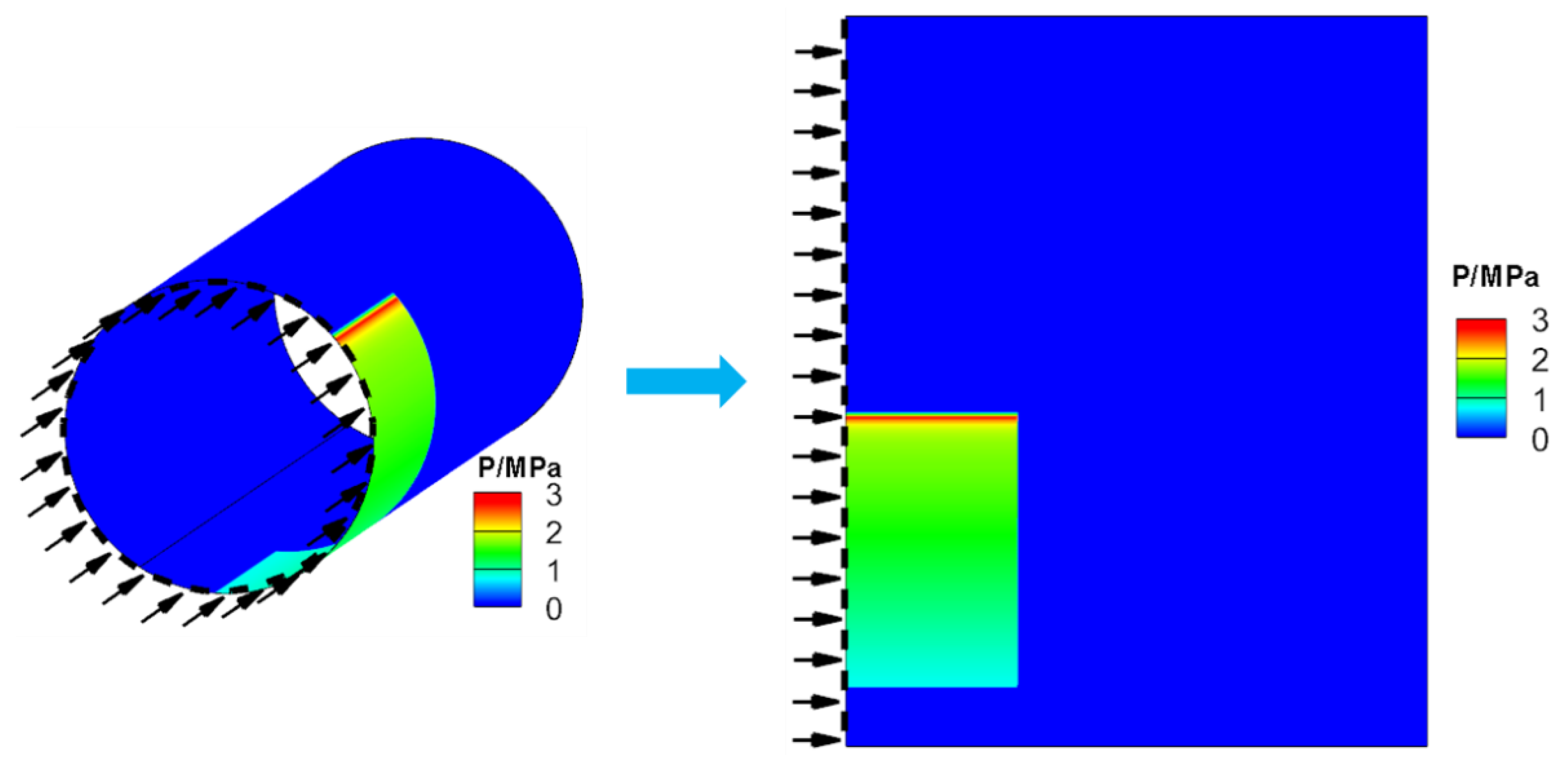

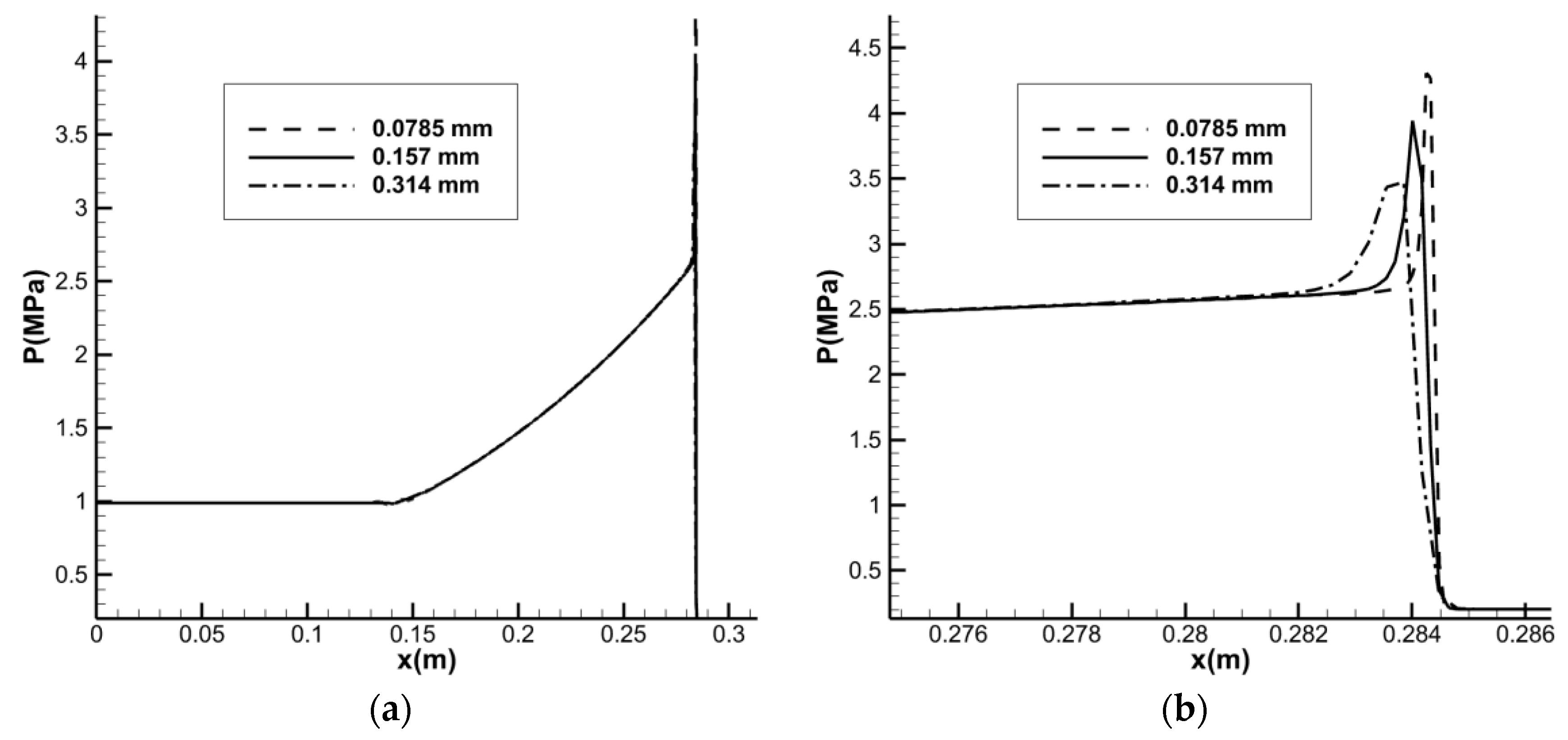

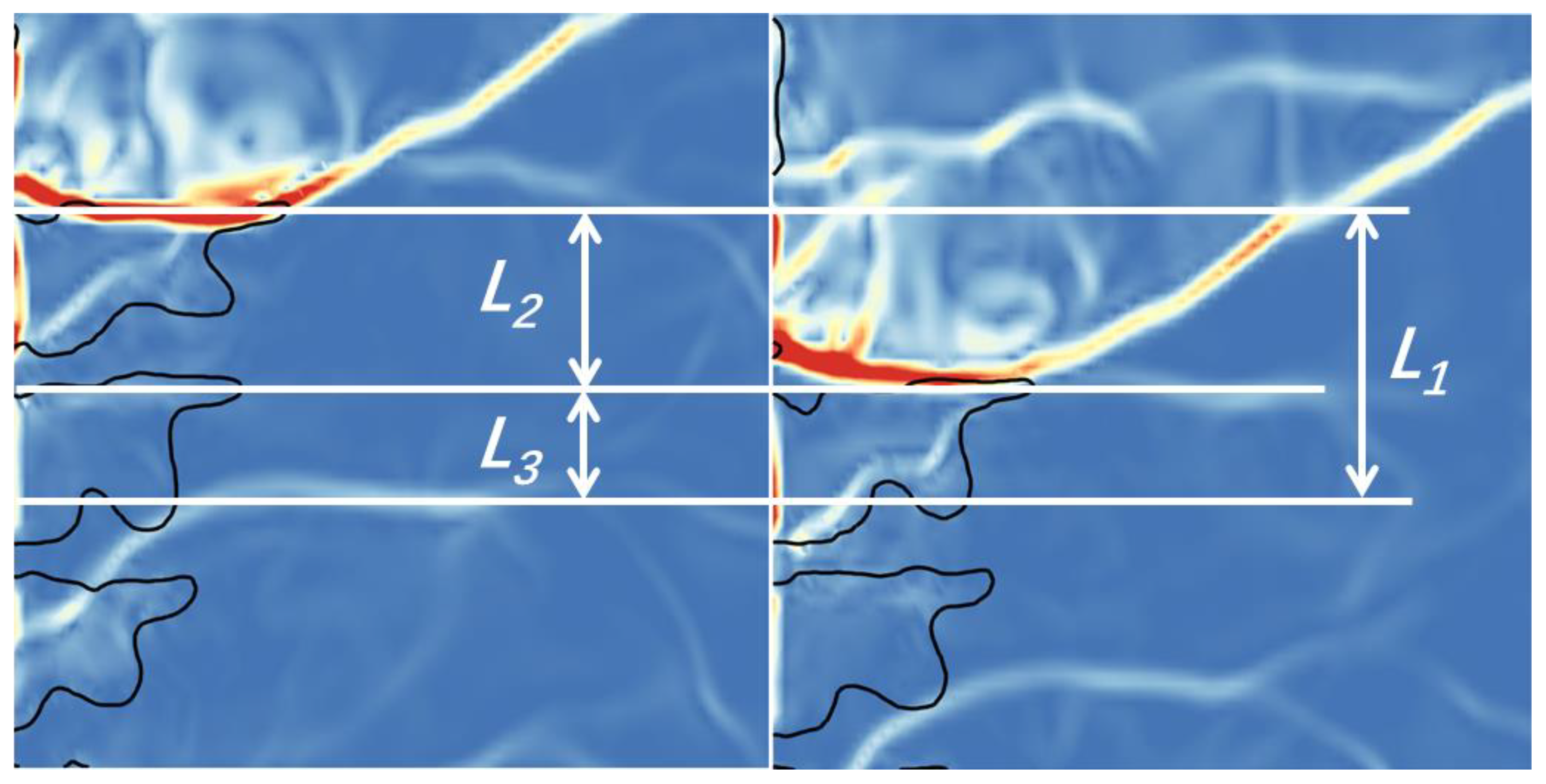
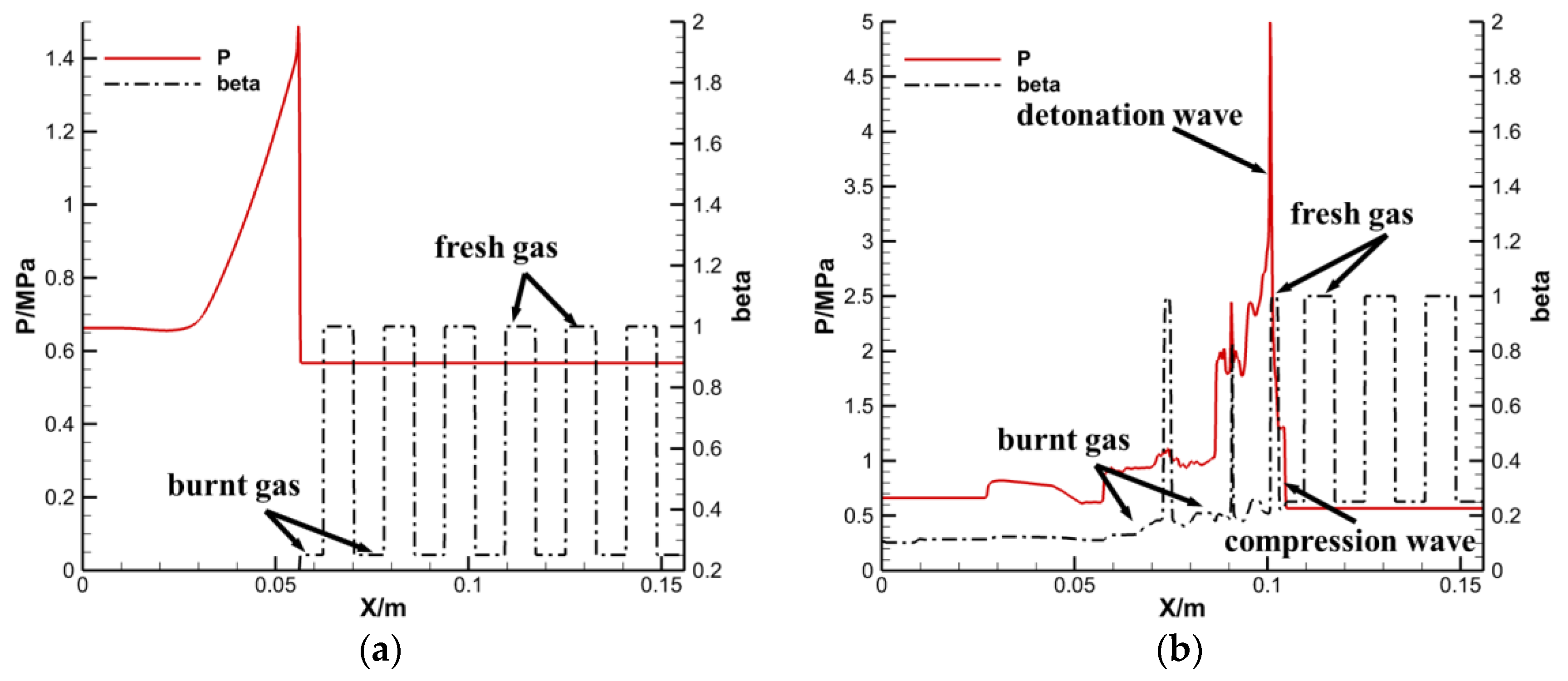
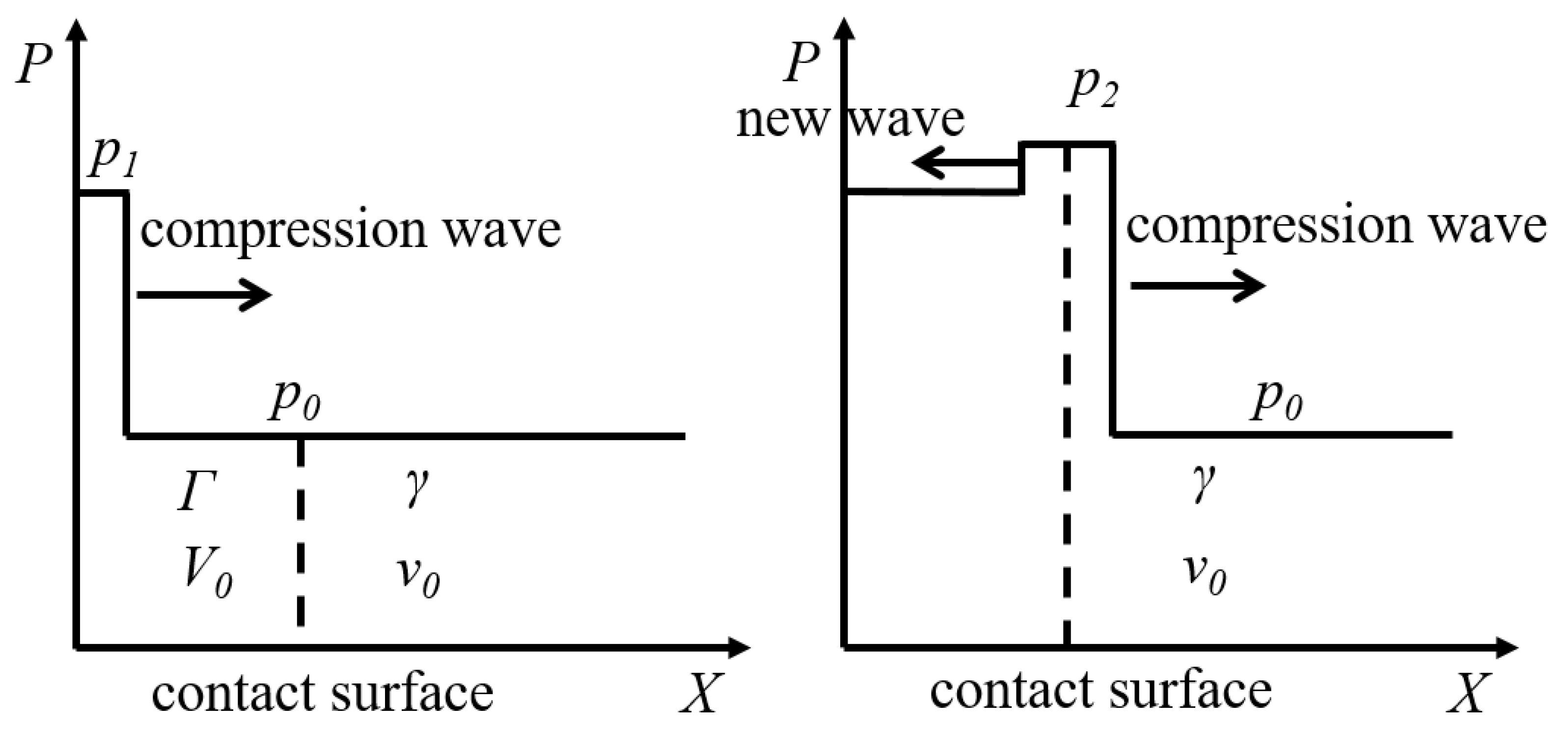


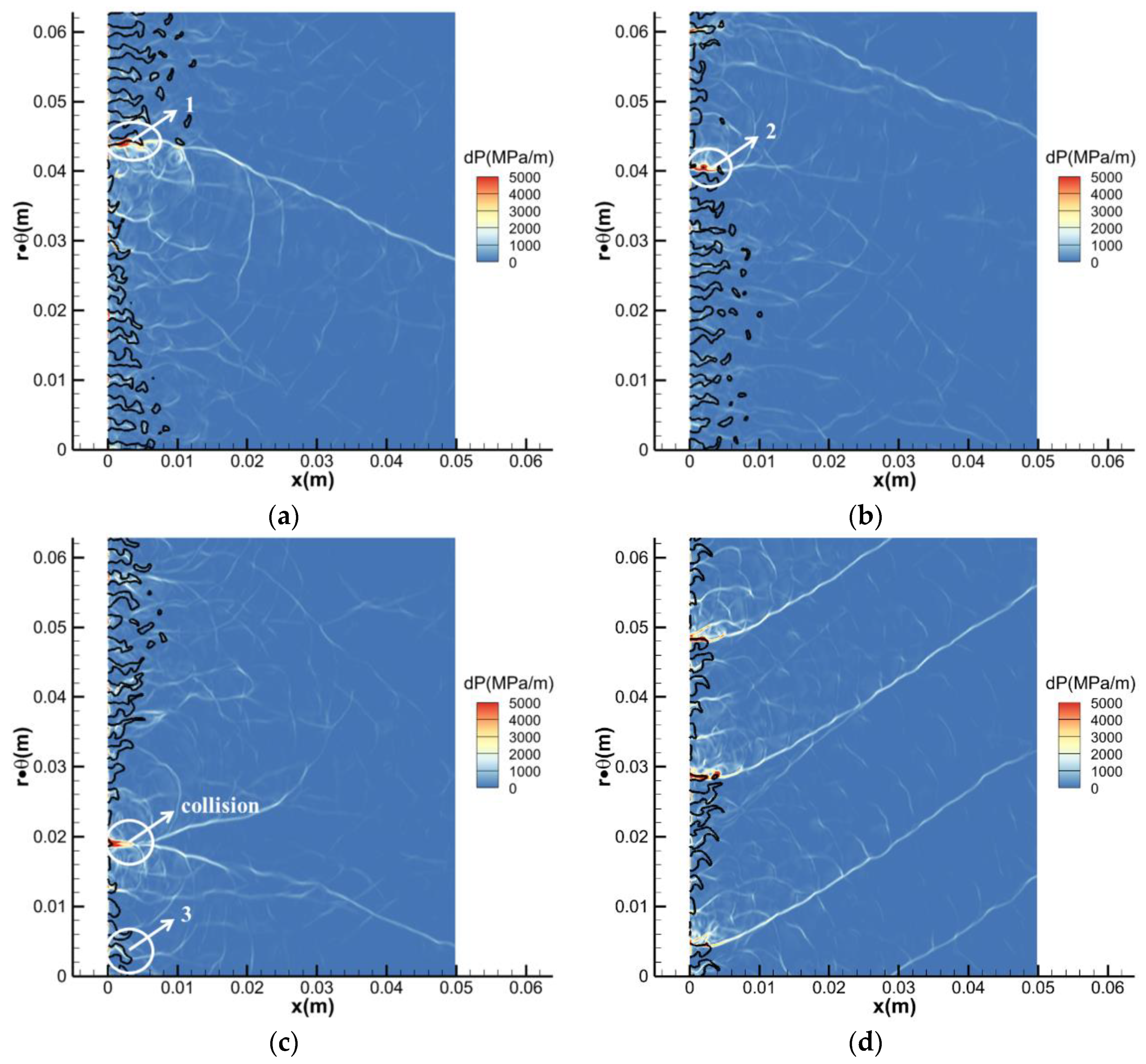

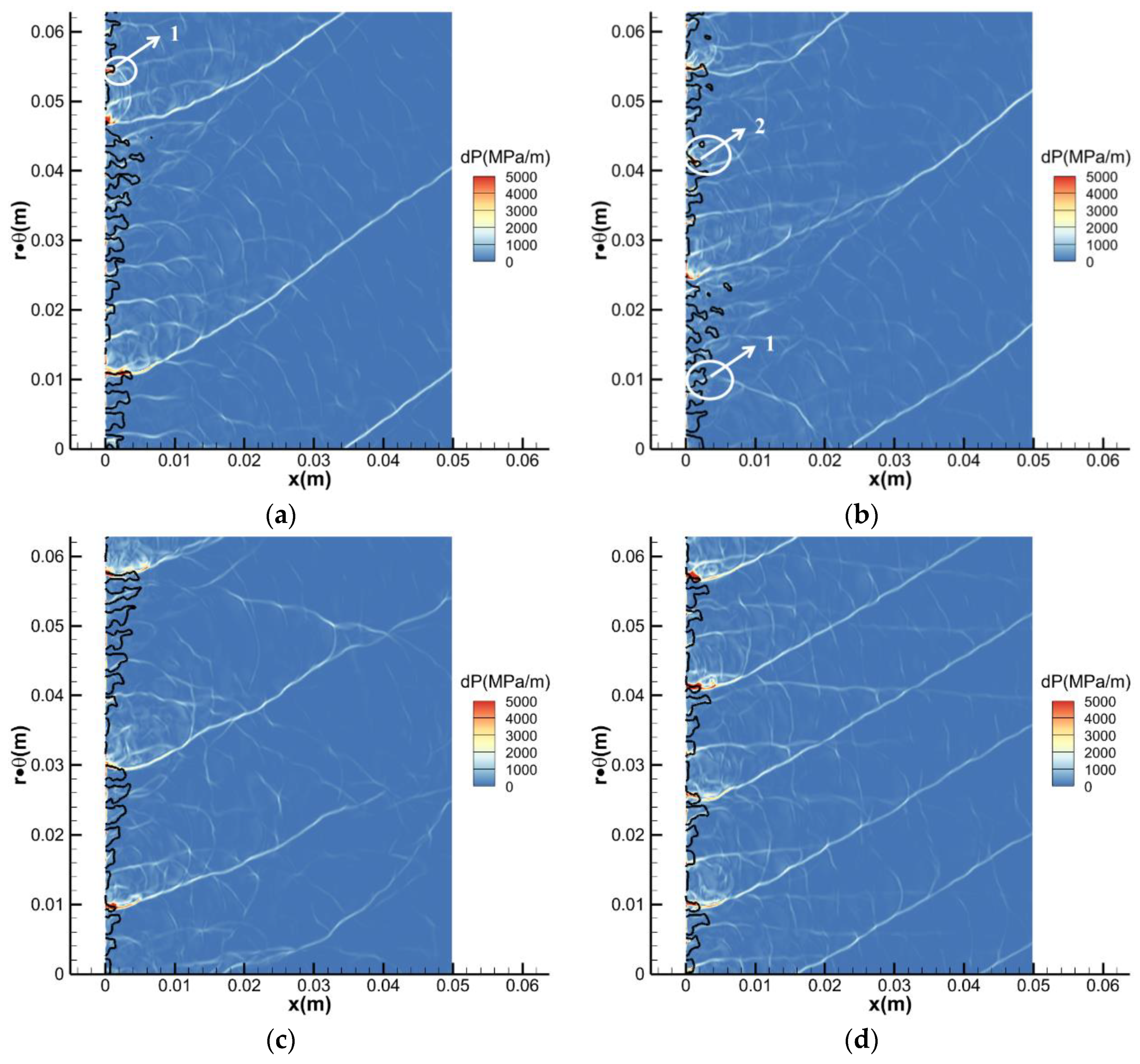
Publisher’s Note: MDPI stays neutral with regard to jurisdictional claims in published maps and institutional affiliations. |
© 2021 by the authors. Licensee MDPI, Basel, Switzerland. This article is an open access article distributed under the terms and conditions of the Creative Commons Attribution (CC BY) license (https://creativecommons.org/licenses/by/4.0/).
Share and Cite
Chen, Y.; Liu, X.; Wang, J. Effects of Reversed Shock Waves on Operation Mode in H2/O2 Rotating Detonation Chambers. Energies 2021, 14, 8296. https://doi.org/10.3390/en14248296
Chen Y, Liu X, Wang J. Effects of Reversed Shock Waves on Operation Mode in H2/O2 Rotating Detonation Chambers. Energies. 2021; 14(24):8296. https://doi.org/10.3390/en14248296
Chicago/Turabian StyleChen, Yanliang, Xiangyang Liu, and Jianping Wang. 2021. "Effects of Reversed Shock Waves on Operation Mode in H2/O2 Rotating Detonation Chambers" Energies 14, no. 24: 8296. https://doi.org/10.3390/en14248296
APA StyleChen, Y., Liu, X., & Wang, J. (2021). Effects of Reversed Shock Waves on Operation Mode in H2/O2 Rotating Detonation Chambers. Energies, 14(24), 8296. https://doi.org/10.3390/en14248296




